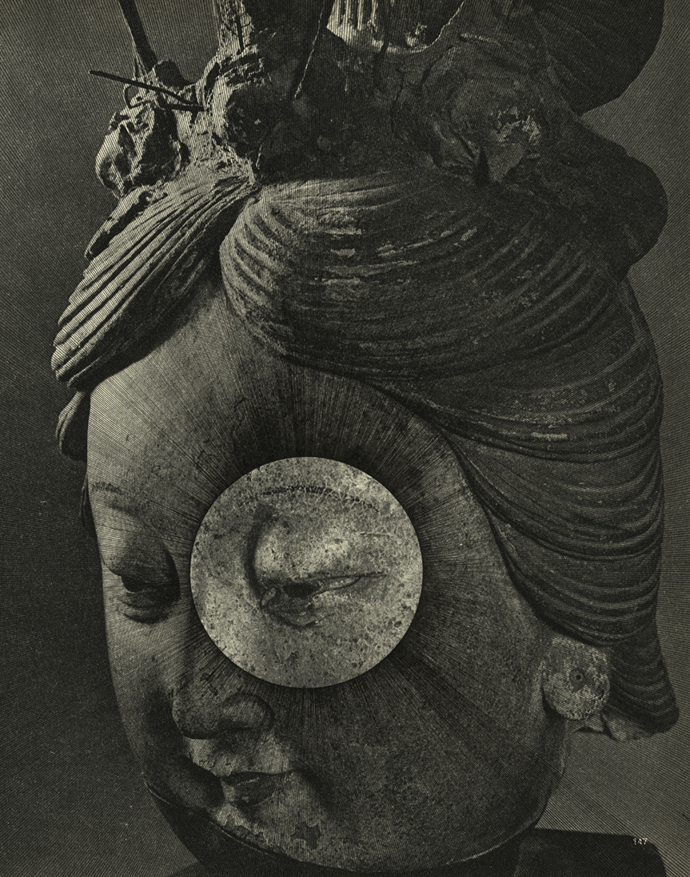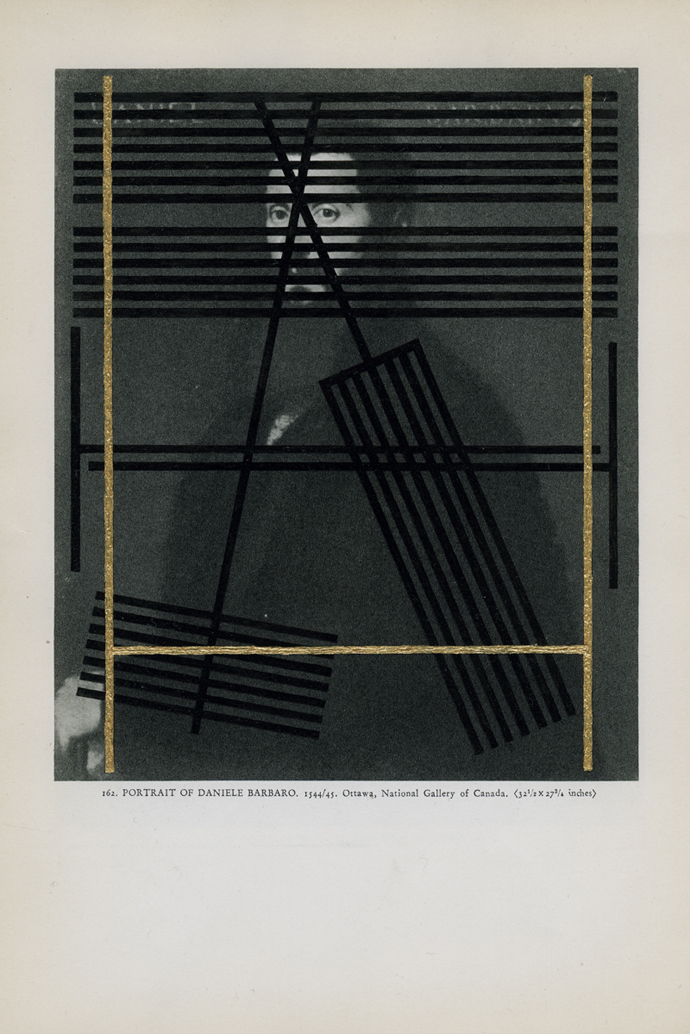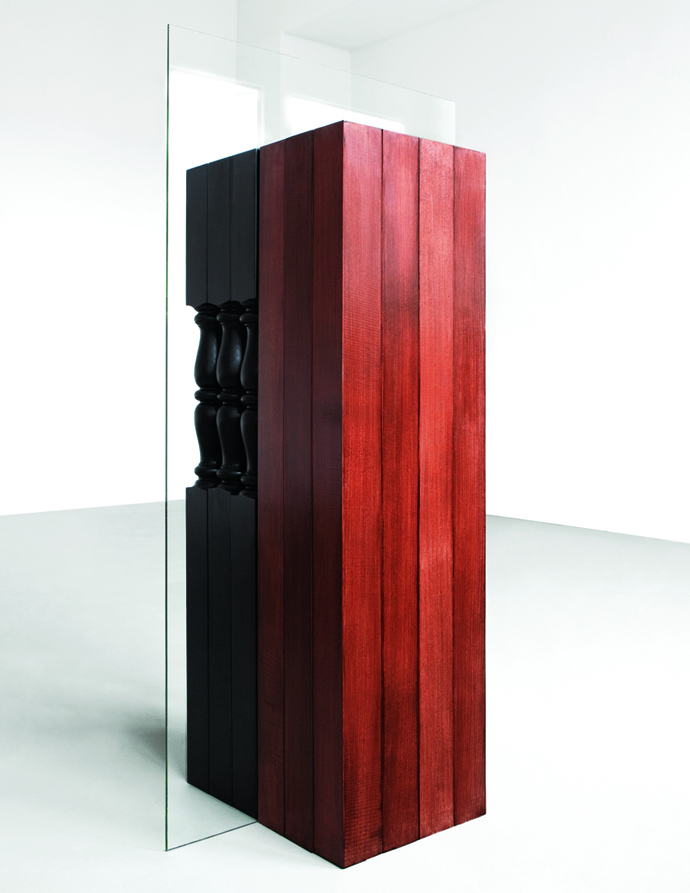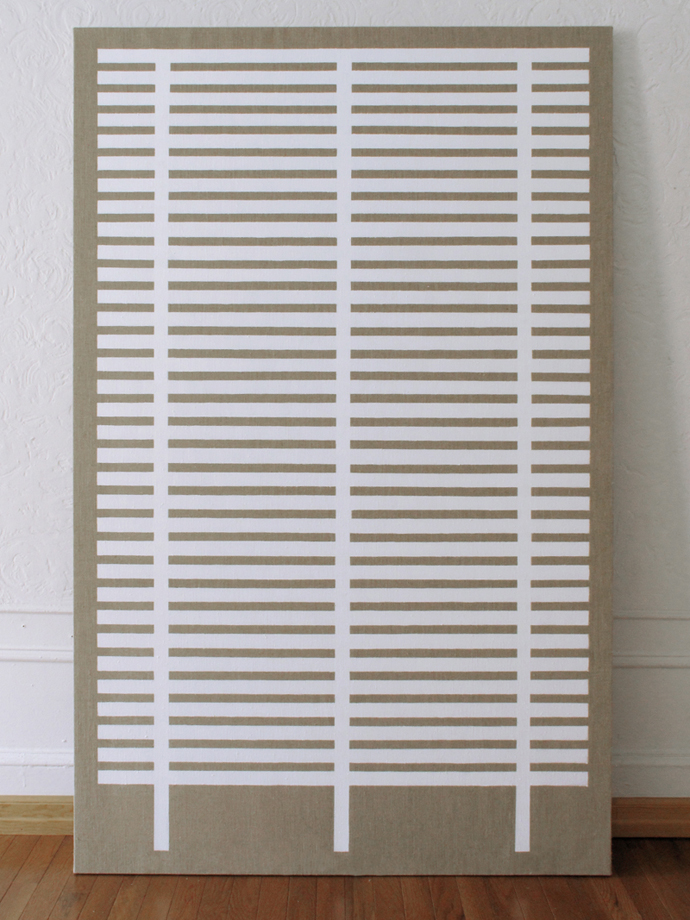davide balliano
He works across many mediums, makes work and research constantly and needs to have a lot of order in his life.
New York-based Italian artist Davide Balliano had a conversation with me about his artistic trajectory, his work, rock climbing, his influences, his love of intervention and his first show in Paris at the Galerie Michel Rein.
Davide Balliano UNTITLED_Woman V Ink on book page 21x26,8 Cm 2013 Courtesy: Michel Rein Gallery, Paris
Lynsey Peisinger: Tell me a bit about your life and your path as an artist.
Davide Balliano: I was born and grew up in Torino, in the northwest of Italy. I was there until I was 18 and then I started in high school studying advertising and graphic design. It was a very peculiar school, a very specific school, which had a lot of elements that are still useful for me now. Especially the graphic design elements, the study of the image, the history of the image, art history. All of that is still informing my work today.
After that, I moved to Milan where I studied photography at Bauer, which is a fabulous school of photography. It is probably the last public school of photography that is left in Italy. What I liked of the school was the approach that they had, that I think they still have now, where rather than teaching “photography as a job”, they tried to raise us as artists working in the medium of photography. They train you as an artist who used the tool of photography. Then what you do with that tool is your choice.
Two years after school, I went to Fabrica, which is a large artist residence in Treviso, in the north east of Italy, a half hour from Venice. It is a beautiful place. A huge building built by Tadao Ando and there are usually approximately 40 artists in residence. It was very commercial-based. There is not much interest in pure artistic research. It’s more applied art. It was a very good experience–they pay you be there, they give you studio, they pay for all of your materials, they give you an apartment. You don’t have to worry about anything. But, even if it was great, it sort of crushed my relationship with photography. Fabrica had a very strong way of shaping the people that were there, so they were not making it a mystery that they couldn’t care less about the kind of photography that I was doing! I was very young, I was 21.
After Fabrica, I stayed one more year in Milano, then I got badly bored of staying in Italy. So I moved to NY in 2006. And it is in the early time in NY that I started to do other stuff. I felt that this move to NY was sort of giving me a clean cut from everything that I did until then. I sort of put photography a bit on the side and I started to draw and to intervene, but still on photographic images. I assume that because of my background in photography, I always have a difficult time starting anything from a blank background, you know from a white slate. For me, it has always been terrifying!
Davide Balliano UNTITLED_Barbaro Watercolor and acrylic on book page 18x25 Cm 2012 Courtesy: Galerie Rolando Anselmi, Berlin
LP: How did you start to move into the mediums you are working with now?
DB: So I started to print out images, mainly from the internet at that time. I still collect a lot images just for my inspiration. And I started to draw freehand on them, mainly abstract geometrical mess! Abstract scribbles, nothing with a precise meaning. Pretty soon, it sort of got clear that the issues that I had with photography were still there–even if I am intervening on top, I still had to take care very much of the meaning of the background image.
There are some images that you can just use for their mood, but there are other images that have a precise meaning that carries responsibilities. I think that this is something that you can use but you need to be conscious about it.
I always hate any kind of work in any kind of medium that just takes strong images and slams them there without standing by it. I always find that it’s a very cheap shortcut. It is something that I always hate.
So, then I started to draw on art history images because I felt that they left me more freedom somehow because there is already a big gap. You are more free to relate with the feeling of the image rather than with historical facts. The facts are there and I agree that I should deal with that, but there is a distance so there is a larger filter. So if I make a drawing on top of a portrait of a king, I should probably do research about who it is etc, but I don’t. And most people wouldn’t say “why did you make a drawing on this king and not on another one?”.
If you do the same kind of thing in photography, it is difficult because photography is such a young medium that almost any photographic image is in a historical context. So from there, the intervention grew more and more precise and became more and more essential. So if you take a drawing of four or five years ago, which was abstract and geometrical, but still messy and not so calculated, they sort of condensed somehow and at some point, it felt a need to take this intervention that I was doing on paper and put it on other mediums.
I burned that town just to see your eyes shine Wood and glass 137x48x48 Cm 2012 Courtesy: Galerie Rolando Anselmi, Berlin Photo: Nikki Brendson
LP: Tell me a bit about the medium of performance.
DB: Performance, which I do although rarely, is a different thing although I feel that it is strongly connected to….photography. It is interesting, I feel that performance is strongly connected to photography because I still feel it as the production of an image. An image that is locked by a location and by a time. I am very fascinated by the potential of making a legend with performance, not necessarily mine. Sometimes you see performances that are unrepeatable–the original work is born in one place at a specific time and if you were there, there is nothing that can repeat that moment. And it gives you something that is so unique, it sort of makes you part of the history of the work, much more than in other mediums.
Most of the time in other mediums, the work is done by an artist and then is shown. And the artwork has a life and it will be the same life for the next many many years. But a performance is in a place and in a moment and if you were there, you had the privilege of being part of it and then nothing will take that away. I find it fascinating. And I relate to it as the creation of an image, practically speaking.
LP: It sounds like performance gives you an opportunity to experience being an artist in a different way.
DB: Exactly. And also seeing what it means for other artists. It has been great because I am completely incapable of doing it in any other medium. I am sort of a control freak for anything else that I do. I know that in performance, I very much enjoy opening up to collaboration and seeing what it brings.
LP: At which point in your life did you realize that you wanted to be making art? Was it from childhood? Did you go to that graphic design school because you knew that already about yourself?
DB: Well, I will say that it depends. I always, since when I was a kid, felt an extreme need for creative expression. So I always had no doubt that I would be doing something creative in life. But, the decision to make exclusively art research sort of developed over the years. It felt like everything else just dropped and it stayed there. For all of my school time, I had the idea that it was impossible to only do that.
I always thought “I need to do something else on the side”. For example, I thought I could do graphic design while doing other work. Also with photography, but photography was even closer to making pure artwork. But it was an idealistic idea that I could be an artist but also make commercial stuff. I needed to take a decision between the two things. And I think that especially when you are young, people want one or the other.
Another thing that I understood–I sound like an old grandfather saying “when I was young…etc”! — When I was in high school I was doing a lot of rock climbing and at a certain point I had a trainer and was training five days a week. I loved it, but I liked to go out and go to concerts too. I had my social life which was very important to me. Everyone else there was like a monk about it. Just training, training, training. They ate only certain food, they were constantly on a diet. Complete dedication. I understood that I couldn’t at all put in that type of dedication and I couldn’t compete with people that were that dedicated to it. And later, I felt the same way with photography.
If you are trying to do something good, you should consider that most likely there is somebody else that is trying to do it and he is going to be very good at it and he is going to put all his energy into it, he is going to make tons of sacrifices and he is going to go through hell to achieve it. So if you are not up for that, you are in for a competition that will never bring you anywhere. So photography for me was sort of like that.
I was in Milano therefore everything was about fashion photography. I mean, fashion photography was fun! I would go to a set, with models and people and music. It’s all fun. But if you are trying to do it, you are in competition with 500 kids obsessed with their freaking portfolios who are putting their money into making fashion photography. I’m like “hell no”! I have to be paid to make fashion photography, not the other way around. People would tell me that I had to put together a fashion photography portfolio and then when people look at you because of that, you bring in your art research. But for me, I knew I would not have the energy to do that because I was already putting all my energy into my research. And I sort of became clear that it wouldn’t work. I had to push on thing or the other.
So I decided only to concentrate on art. I assisted for many years. I wanted to learn from an artist. I wanted to learn about art-making and also the practical side of it.
Davide Balliano UNTITLED_Grid27 Acrylic on linen 120x180 Cm 2012
LP: When you came to NY, you assisted Marina Abramovic for four years. How did that experience influence your work and how did it prepare you for your own path as an artist?
DB: For me, Marina was like my own private university. She taught me everything that I know about surviving as an artist.
Independently of the love that I have of her work–I approached her because I always had an extreme fascination with her work– the privilege that I had when working with her was that I was in contact with the private side of her. And what I gained from the private relationship is to see how she is completely dedicated to her work. Marina is all work. And there is an insane amount of energy and dedication that she puts into it. Her work is her life, there is no separation, there is no in between.
The personal investment that she makes in her work, I assume gives her this concentration that comes out so clearly in the work. And, other than that, she is such a big artists that if you work with her for four years, afterwards you can truly do anything. I came out of that experience being practically scared of nothing.
Marina works at such a level of intensity that there is really nothing that you can’t do after that. It is like boot camp. You are so used to working under pressure –good pressure, but pressure–daily. Everyday was the same amount of concentration and speed and pressure. The responsibilities are always big. There is never a day that you go and pick up flowers! Every day is something big, something important, something that you can’t mess up. When you do that every day for four years, you come out and truly its like those American movies about Marines. You can really do anything!
LP: You seem to have an approach to your work that is extremely organized and structured. It seems to me that are an artist who approaches your work like one might approach any business in terms of how you structure and use your time and also how you interact with and deal with people. I wonder if working with Marina influenced that or if you were always someone who could self-motivate and give order to your life.
DB: Definitely working with Marina, and my other assistant jobs, gave me that structure. Marina is naturally 80 percent of it, but everything contributed. Assisting fashion photographers meant being efficient and fast. There are a lot of responsibilities and you have to work under pressure, so you get used to needing to maintain focus. Keeping your concentration on the work itself under all the pressure seems to me to be the secret that all of these big guys shared.
There are tons of different kinds of artists and I know fabulous artists that work in complete chaos and it’s fine for them. Their art can come out of that. They can do nothing for weeks and then disappear and work day and night for a month and then come out like drained zombies, but the resulting work is marvelous.
But that’s not for me. The less I do, the more in pain I feel.
Davide Balliano PICATRIX, installation view Courtesy: Michel Rein Gallery, Paris
LP: Tell me about that show in Paris.
DB: The show in Paris started with an invitation from Eugenio Viola, a wonderful curator that I worked with last January. He invited me to have this little show and he set the theme of the show. He asked me to work with the concepts of alchemy and symbolism and sort of esoteric feelings, which is something that is present in my work even if I don’t always relate to those things in my life.
There are four works on paper, two paintings on board and one sculpture. We see a combination of different mediums and the dialogue that they have with each other, which is very important for me. I never make a show that deals with only one medium because it feels like a small part of what I do. I feel like I can’t say what I want to say with one medium, I have to put them together.
In the past Alchemy was called “the great work” and I love it. I like the utopic idea that through my work, and the elements given to me, I can control these elements and have a higher understanding of who I am and a higher consciousness.
Eugenio asked me to consider these things and to put together a little show that gives my view on these topics, so I did.
LP: What is the last thing that stimulated you?
DB: The film The Turin Horse by Bela Tarr. It is really stuck in my mind and I keep on thinking about it. It was very very strong for me. And not because I am from Turin! Its strict and minimal and powerful and its a complete tragedy. There is no space for hope, no space for light, like a classic tragedy. Everything is rotting and closing in on you. Sometimes I feel that tragedy might be more inspiring than happy thoughts. Happy thoughts are private while tragedy can be shared and if you recognize the suffering in someone else, it can make you feel less alone in your own troubles. That is probably why all of the work that I strongly admire has a heavy portion of tragedy and weight.
PICATRIX at Galerie Michel Rein, curated by Eugenio Viola
http://michelrein.com/
http://www.davideballiano.com/




